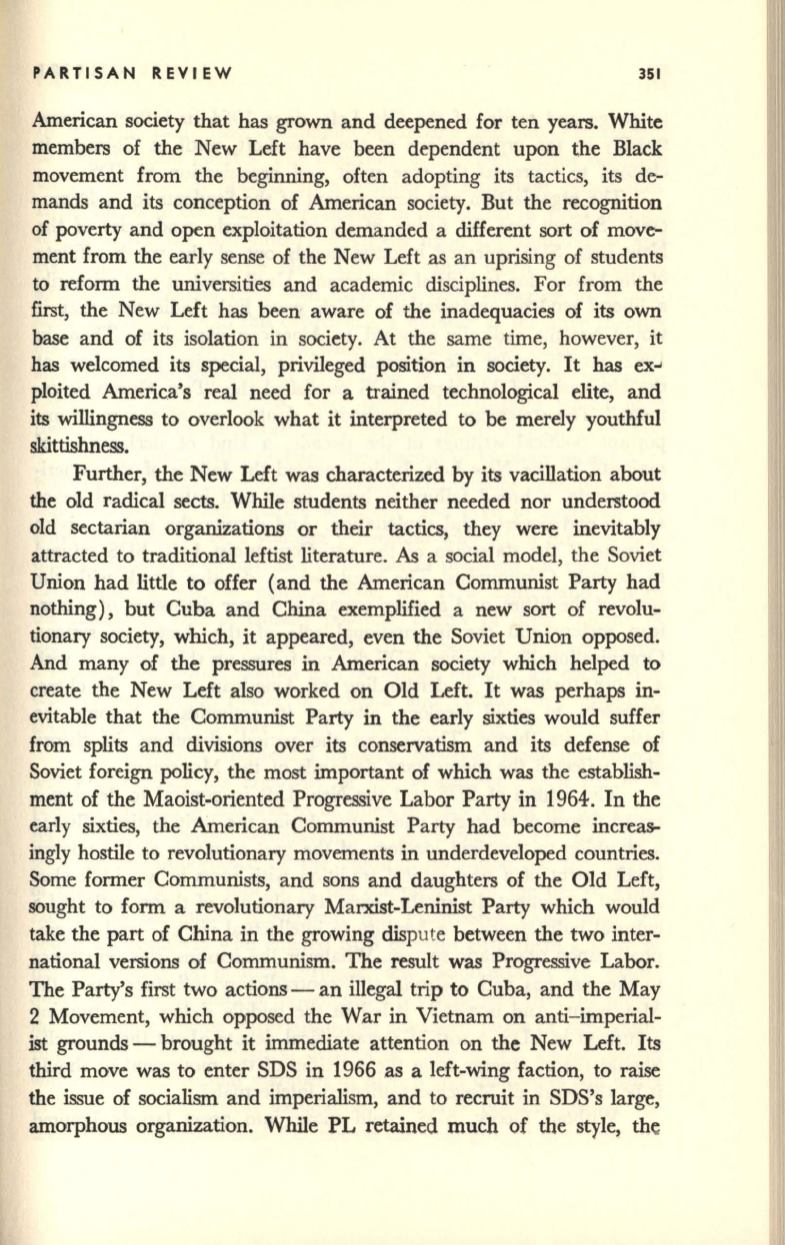
PARTISAN REVIEW
351
American society that has grown and deepened for ten years. White
members of the New Left have been dependent upon the Black
movement from the beginning, often adopting its tactics, its de–
mands and its conception of American society. But the recognition
of poverty and open exploitation demanded a different sort of move–
ment from the early sense of the New Left as an uprising of students
to reform the universities and academic disciplines. For from the
first, the New Left has been aware of the inadequacies of its own
base
and of its isolation in society. At the same time, however, it
has welcomed its special, privileged position in society. It has ex""
ploited America's real need for a trained technological elite, and
its willingness to overlook what it interpreted to be merely youthful
skittishness.
Further, the New Left was characterized by its vacillation about
the old radical sects. While students neither needed nor understood
old sectarian organizations or their tactics, they were inevitably
attracted to traditional leftist literature.
As
a social model, the Soviet
Union had little to offer (and the American Communist Party had
nothing), but Cuba and China exemplified a new sort of revolu–
tionary society, which, it appeared, even the Soviet Union opposed.
And many of the pressures in American society which helped to
create the New Left also worked on Old Left. It was perhaps in–
evitable that the Communist Party in the early sixties would suffer
from splits and divisions over its conservatism and its defense of
Soviet foreign policy, the most important of which was the establish–
ment of the Maoist-oriented Progressive Labor Party in 1964. In the
early sixties, the American Communist Party had become increas–
ingly hostile to revolutionary movements in underdeveloped countries.
Some former Communists, and sons and daughters of the Old Left,
sought to form a revolutionary Marxist-Leninist Party which would
take the part of China in the growing dispute between the two inter–
national versions of Communism. The result was Progressive Labor.
The Party's first two actions - an illegal trip to Cuba, and the May
2 Movement, which opposed the War in Vietnam on anti-imperial–
ist
grounds - brought it immediate attention on the New Left. Its
third move was to enter SDS in 1966 as a left-wing faction, to raise
the issue of socialism and imperialism, and to recruit in SDS's large,
amorphous organization. While PL retained much of the style, the


